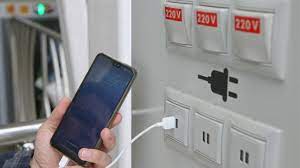The Rise of the Tablet Computer
Few electronic devices have enjoyed the rapid surge in popularity and
usage that tablet computers have. Many consumers consider the January
27, 2010 announcement of the launch of Apple's iPad by the late Steve
Jobs as the birthdate of the tablet computer, however, tablets as we
know them today have existed for over 20 years.
According to Techradar, the first real tablet computer was the GRIDPad, launched in 1989. This basic, mono-color portable computing device had a 10-inch screen and boasted 3-hours of battery life, however, the whopping $2,400 price tag kept this early tablet out of reach for the average user. Since that time, tablet-like touchscreen devices such as PDA's gained in popularity, proving to computer companies that there was strong demand for portable computing devices. In 2007, the Amazon Kindle was launched, introducing readers to a portable, paperless way to read their favorite books.
Tablets now rank among the most popular electronic devices throughout
the world. Techcruch reports that eMarketer estimates there were
approximately 13 million U.S. tablet users in 2010, 33.7 million in 2011
and an estimated 54.8 million in 2012. According to this report, the
number of Americans who use devices like the Microsoft Surface, Apple
iPad and the Samsung Galaxy Tab 2 will grow to 90 million by 2014,
meaning that about half of all American adults will own a tablet device
within a few years.
What Makes Tablets So Popular?
Tablet computing has become wildly popular among a broad range of
consumers, with everyone from schoolchildren to senior citizens using
tablets at school, home and work. According to a June 2012 report from
the Online Publishers Association (OPA), "tablet usage is exploding",
with content consumption (watching movies, reading e-books, buying apps
and shopping) being the most common reason why people use tablets.
Just How Popular Are Tablets?
Research by the OPA revealed that tablet owners use their tablets a lot -
spending an average of 14 hours every week on their devices. Most
tablets are used to access information on the Internet, with checking
email, game playing, social networking and media consumption also
ranking among the most frequent uses of tablet computers.
Tablet computers have even become a fixture in fast food restaurants,
with a Virginia Beach McDonald's offering up free Apple iPad use with
their fries, burgers and shakes.
Tablets, Wi-Fi & The Cloud - A Perfect Match
While the portability and affordability and functionality of tablet
devices are often cited as the main reasons why these devices have
gained such widespread acceptance among all consumer groups, without
Wi-Fi, tablet computing would not exist. Tablet computers rely on
wireless Internet connections using either Wi-Fi or 3G/4G cellular to
connect users with their favorite websites, email and work servers.
Along with Wi-Fi, the advent of cloud-based computing has helped spur on
the popularity of tablets, since many of these portable devices have
relatively little onboard memory. Thanks to cloud computing, tablet
users can store their favorite movies, music, photos and digital files
on remote servers, accessing these files on demand via the Internet.
This means that tablet computers do not need to have large, bulky hard
drives onboard. This helps to reduce the cost of tablets, making them
lighter and more portable while extending the battery life, adding to
the portability of these devices.
Are Tablets and E-Readers Replacing Books?
According to a recent infographic released by Mashable, e-readers like the Amazon Kindle are
surging in popularity, with e-book readership nearly doubling between
2011 and 2012. In 2011, over 40 percent of American adults read an
e-book on a tablet, smartphone or e-reader.
While some critics believe that tablets and e-readers could lead to the
end of traditional paper-based books and magazines, others point to the
benefits of the rise of e-reading. Mashable reports that e-book devices
and tablets actually increases readership of novels, non-fiction e-books
and publications, with owners of devices like the Amazon Kindle reading
nearly twice as many books each year than readers of traditional-style
books. Among those who use a tablet to read on, 25 percent do so to
learn or gain new information, a promising statistic for the future of
writers and publishers who feared obsolescence with the decline of
paper-based book sales.
What's Next?
Industry watchers predict that tablet use will continue to grow, and in
many households even replace traditional desktop and laptop computers.
As these portable computers continue to become more powerful and
affordable, tech companies will focus on building more apps and
designing even more advanced devices. Tablets generally cost about the
same, or in some cases, less than either desktop or laptop computers,
leading many consumers to consider replacing their current computer with
a tablet device.
Tablet computers such as the Apple iPad and the Microsoft Surface are
leading the way among mobile devices that allow everyone to stay
connected using the Internet, no matter where they work, live or play.
While the traditional PC will endure in many homes, schools and
businesses, consumers can expect to see tablets everywhere from their
local hospital to schools, churches and libraries.



No comments:
Post a Comment